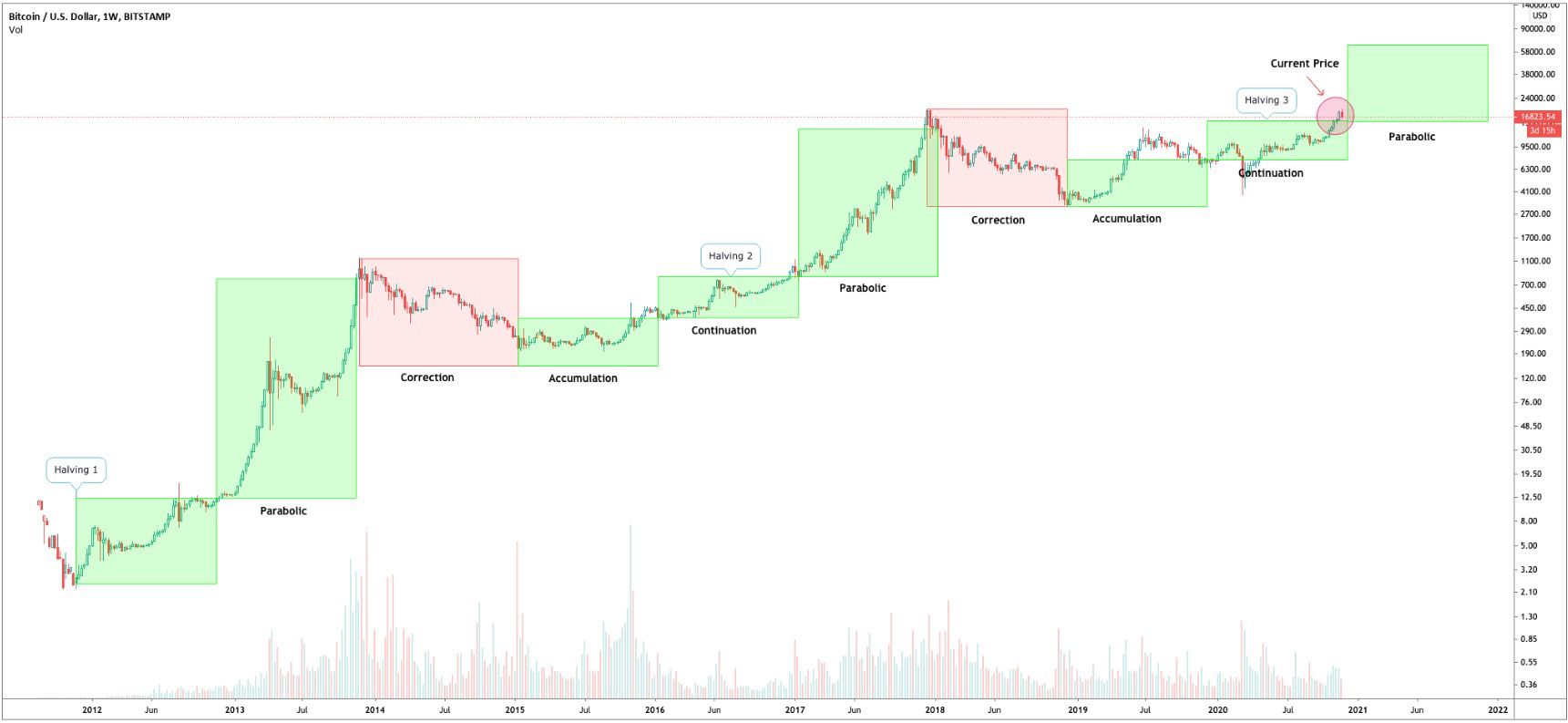
WRITTEN BY TRISTAN AMZALLAG, PRESIDENT ONWATT INC., CRYPTO ASSET SPECIALIST
“Bitcoin is dead...”
Boy, have I heard that a lot over the past decade.
Many people, including former Fed Chair Alan Greenspan, believed Bitcoin would not survive over the last 10 years. He declared it dead or worthless twice; once at $1,147.25 per btc (Bitcoin) and again at $13,708.99 per btc. Jamie Dimon, the CEO of JPMorgan, also declared Bitcoin dead or worthless half a dozen times, the first was at $408.74 per btc and the last time he did it, the price was $57,490.31 per btc. In fact, bitcoinisdead.org has collected all the public declarations of Bitcoin’s death since its inception and they report over 380 cases of economic leaders, politicians and journalists making the same declarations.
Yet, here we are, sitting at $22,000 per btc at the time of writing. Bitcoin is still very much alive, and not only is it alive but it is resilient and thriving. A price of $22,000 per btc is higher than the highest point it reached in 2017 when it hit $19,000 per btc. While this is good news and a sign of growth in the macro view, we shouldn’t easily dismiss the recent events in the crypto market. In November of 2021 Bitcoin hit an unprecedented $69,000 per btc and Ethereum hit $4,644 per eth, many new investors saw an exploding sector and due to an abundance of cash, coupled with a pandemic fueled need to spend it, they poured into the crypto space creating a massive bull run and minting many new millionaires along the way; however, both have come crashing down some 60% since then, which in stock market terms is a full blown depression. This has left many newcomers feeling like Bitcoin was the worst investment they have ever made. I’m here to tell you it wasn’t.
What if I told you that the 2021 bull run was actually predicted and could even be “counted on”? In fact 2021 was the third in a predicted series of bull runs during Bitcoin’s history, and after each bull run we’ve experienced a “crypto winter” like the one we are in now. These bull runs have a correlation to the way Bitcoin works as a technology and because Bitcoin has been coded to execute a certain way, those executions allow us to map out the price trajectory of Bitcoin. This all seems a little too good to be true since if you can predict bull runs then someone could make a lot of money, and in fact people have!
To understand what’s going on, and how we can predict these bull runs, we need to get a little technical about how Bitcoin works. Bitcoin is capped at 21 million total coins, but they haven’t all been mined yet. Satoshi (Satoshi Nakamoto is the name used by the presumed person or persons who developed bitcoin) was a smart guy and knew not to release all the coins at once, which would allow malicious actors to simply acquire all of them and render the network useless. Instead, Satoshi coded the network to release the coins at a variable pace. He wanted to release many coins at first and the remaining coins slower over a long period of time. It has been determined that the last Bitcoins will be mined in 2140. This “slow burn” allowed users enough coins to start working with the technology to develop new applications, but also prevented monopolizing of the network.
HALVING
Miners are the network participants that mint new Bitcoin; they can then sell that Bitcoin to cover their bills and pay themselves for their work. When Bitcoin was released, miners were rewarded with 50 new Bitcoin every 10 minutes, however 4 years later a pre-programmed event happened where the number of newly minted Bitcoin was cut in half. The reward for miners went from 50 to 25. This event is called “The Halving”. Roughly six months after the first halving, we saw Bitcoin’s first bull run to $1200/btc, up from $35/btc. That’s a 3400% rise over a period of six months. Shortly after the run the price crashed 90% and Bitcoin was declared dead many times throughout 2014 and 2015. In fact Bitcoin was the second worst performing currency of those years, beaten only by the Ruble. Bitcoin was, in fact, not dead, instead it landed at $195/btc which was higher than where it had started at the bull run. That’s progress.
Four years after the first halving event, as coded into the technology, Bitcoin had its second halving and the reward of new Bitcoin fell from 25btc to 12.5btc. This led to Bitcoin’s second market bull run, this time climbing all the way to $19,000 in December of 2017. That price also came crashing down through 2018 to a bottom of $3400/btc in March 2019; a drop of 75%. Once gain Bitcoin was declared dead and many crypto projects went bankrupt or were abandoned. Yet again the naysayers missed the big picture and failed to see that $3,400 was progress as it was the highest low Bitcoin had ever seen.
Once again, in 2021, Bitcoin experienced another Halving event, this time reducing the supply of new Bitcoin from 12.5btc to 6.25bt. As expected, this once again led to another bull run, this time taking Bitcoin all the way to $69,000 in November of 2021. Following that high point, we once again see a drop of 60% back down to $22,000 in 2022, which brings us to today. Technically Bitcoin did drop a little further to $17,000 but it did not hold that low for long and bounce right back to a predicted $22,000 which is higher than the previous bull run high of $19,000.

As in previous cycles, Bitcoin once again made significant progress; not only are the lows still higher than previous highs, but we also see that the percentage drop after each bull run is smaller.
Obviously, there is a pattern here and it is clearly driven by these halving events, but why? It’s simple supply and demand economics. There are only about 12% of all Bitcoin actively traded on the open market, the rest tend to be held in wallets by long term investors, or as liquidity for crypto businesses. This means that the amount of Bitcoin out there for grabs is small and when a halving event occurs the amount of new Bitcoin that can enter the market gets reduced by half, causing a major disruption in supply which in turn jolts the market into these bull runs. By comparison imagine what would happen to the price of gas if oil supply was suddenly cut in half, we would see a similar jolt in oil prices.
THE FOUR PHASES
The Bitcoin market cycle can be broken down into 4 phases which begin during the period of contraction right after a bull run:
The first phase is known as Accumulation and it occurs once the price has hit its bottom and begins to turn upward again. Investors identify the maximum money making opportunity during this phase and fewer Bitcoin circulate.
The second phase is known as Continuation, during this phase the price continues to move up but slowly at first. The halving event occurs during this phase and helps to propel the price into the next phase.
The third phase is known as Parabolic where the halving event, coupled with exuberance from investors pushes the price to a new all time high (known as ATH). This phase is extremely volatile, as we saw in 2021.
The fourth and final stage is known as Correction where the exuberance dies and the market sees a major correction. During this time there is a lot of capitulation and bankruptcies within the industry, money is lost and many bad bets are called in. But, ultimately, the strong survive and help to grow the market each time.
The graph below shows you the market cycle published in 2020 and it’s interesting to note that it was predicting up to $70,000/btc in 2021 which is where the price came just shy of.

Source: CalebAndBrown.com/blog/bitcoins-market-cycle
If we use the same model to look into the future we start to see numbers like $150,000/btc by December 2024 after the halving in March, and $350,000/btc to $450,000 in 2028 and even $1,000,000/btc in 2032. The halving in 2032 will cause new Bitcoin mined to go from 1.52 to 0.78 per block. That’s a very small amount of Bitcoin compared to the 6.25btc mined today. That drop in available btc stock will force the price into these larger numbers as Bitcoin matures and demand either stays the same or rises.
As you can see, this 2021 bull run was very much in line with past Bitcoin behavior and understanding the forces behind these bull runs will allow you, the investor, to better navigate the Bitcoin and Crypto market places. If you invested in Bitcoin at the high, I hope this article can bring you some reassurance about the bet you made for the future. If you’ve been waiting on the side lines for a good time to buy Bitcoin, we’ve just entered the Accumulation phase, which is historically the best time to buy in.
While I spent a lot of time analyzing the Bitcoin market cycle in this article, it’s important to note that Bitcoin is the king of crypto at the moment and where it leads, all the other cryptos follow. I don’t believe this will hold true forever and much like the stock market, other crypto projects such as Ethereum, Cardano and Solana will break away from Bitcoin’s grip and start to form their own market patterns, but that day has not come yet.
I also want to note that this Bitcoin pattern won’t last forever, as the amount of new Bitcoin that is mined gets reduced, the price volatility will calm down and eventually market bull runs followed by crashes will smooth out, paving the way for Bitcoin to become an excellent store of value, a hedge against volatility and a steady medium for currency exchange.
